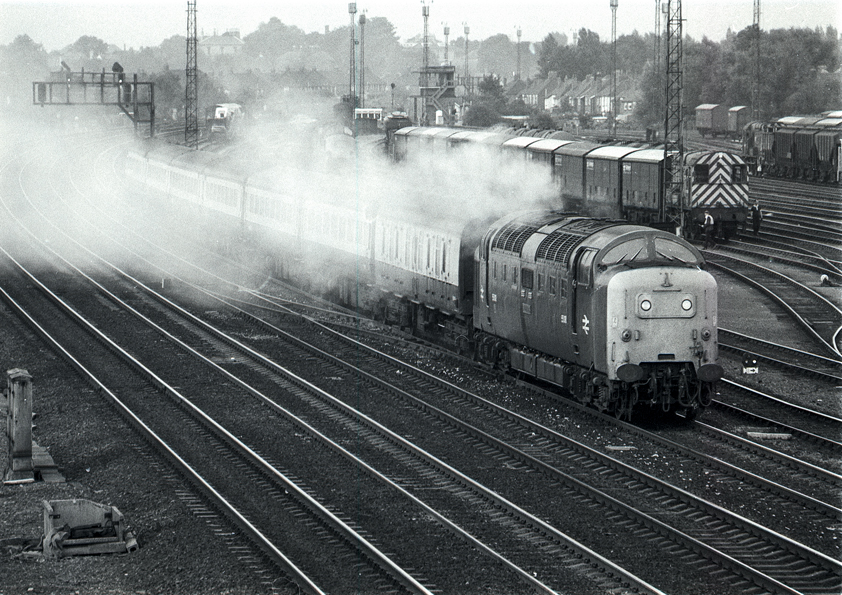Preserving Deltic Heritage: A Memories of Motion & DPS Collaboration
The Unforgettable Experience of Deltic Locomotives

If you’ve ever stood on a platform as a Deltic prepared to depart, you’ll carry that moment with you forever. The anticipation builds first – a subtle tremor through the concrete beneath your feet, a change in the air itself. Then the distinctive rumble begins, growing into that unmistakable, powerful throb that seemed to resonate in your chest cavity. The smell of hot diesel, the shimmer of heat haze above the engine compartments, the way the very platform seemed to vibrate with contained power.
And then – acceleration, announced by the eruption of blueish-grey exhaust smoke into the air! Not the gentle pulling away of lesser machines, but a purposeful, muscular surge that announced these weren’t ordinary locomotives. These were the fastest diesels in the world, 3,300-horsepower machines that could haul the East Coast Main Line expresses at speeds that made your heart race. The roar of those Napier engines – two nine-cylinder opposed-piston units working in harmony – created a symphony that railway enthusiasts would recognise instantly, even decades later.
That experience, that visceral connection to these magnificent machines, is what the Deltic Preservation Society fights to preserve. Not just the locomotives themselves, but the living, breathing encounters that transform casual observers into lifelong enthusiasts.
How Much Does Deltic Preservation Cost?
Today, only six Deltics survive from the original fleet of twenty-two Class 55 locomotives. Three of these magnificent machines live in the care of the DPS, maintained by volunteers who understand that preservation isn’t about creating museum pieces – it’s about keeping history alive and operational.
However, mainline operation is relentlessly, exhaustingly expensive. These aren’t vintage cars that can be garaged between summer rallies. They’re complex, demanding machines that require constant attention, specialist knowledge, and rare parts that sometimes need to be manufactured from scratch. Every time a Deltic turns a wheel on Britain’s railways, it represents thousands of volunteer hours and significant financial investment.
Modern safety standards, accessibility requirements, operational certifications – the regulatory burden alone would make a railway engineer from the 1960s weep. A single mainline certification can cost tens of thousands of pounds. Major overhauls run into six figures. Parts that were once standard railway stock now need to be custom-made by specialist engineers who remember how things were done.
The work never stops. Preservation isn’t a restoration project with a completion date – it’s a commitment that stretches forward indefinitely, funded year after year through the dedication of supporters who refuse to let this heritage fall silent.
How Does Memories of Motion Support the DPS?
Memories of Motion stands with the Deltic Preservation Society in this mission. We’ve created four exclusive photographic products using Trevor Ermel’s striking image of 55018 ‘Ballymoss’ at York station, celebrating these legendary locomotives, with 100% of profits going directly to the DPS to support their preservation work.

When you choose one of our DPS collaboration products, you’re not making a purchase – you’re making a statement. You’re saying that the smell of hot diesel matters, that the platform vibrations matter, that the next generation deserves to experience what we experienced. You’re supporting the engineers and volunteers who arrive on cold winter mornings to maintain machines that British Rail declared surplus decades ago.
Further details on the collaboration can be found here
You can buy one of these prints here.


Leave a Reply